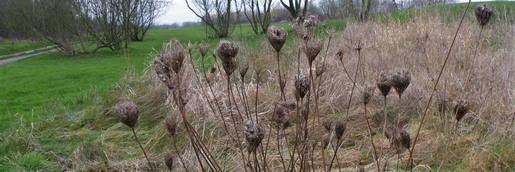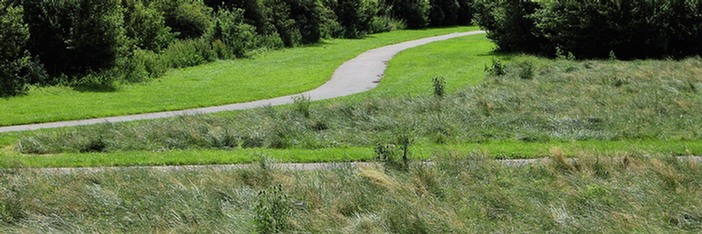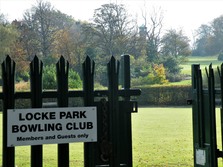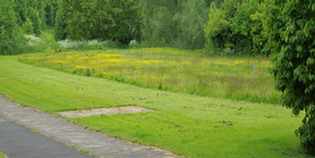

Biodiversity
Action
Plan

Amenity grassland. A number of our parks, playing fields and urban green spaces are managed with nature in mind, however closely mown lawns have a place in more formal parks and gardens —and shorter grass is needed for sports, play and recreation.
But opportunities exist to have areas of shorter and longer grass in more of our green spaces - as well as some flower-rich areas - to support biodiversity and a more natural environment.
Grass provides somewhere for wildlife to forage, feed, and thrive.
Many species of invertebrates over-winter on grass as eggs, larvae or pupae before completing their life cycles. Grass is also food for the larvae of some invertebrates including types of butterflies and moths.
Keeping grass a little longer helps retain moisture which benefits many invertebrates such as worms, beetles, grasshoppers and spiders, living at or just below the soil surface.
Amenity Grassland
Although amenity grassland is not a priority habitat in the usual sense. it can be managed to benefit biodiversity. Amenity grassland is therefore included in this Biodiversity Action Plan.
Phase 1 habitat surveys record amenity grassland as ‘amenity grassland’ under a broader heading of cultivated ground.
UKHab surveys have amenity grassland as modified grassland (g4) or other grassland (g3).
Grass found in urban green spaces is often heavily managed and regularly mown, but areas of longer grass are a very valuable habitat.
Reducing the number of cuts per year of areas of amenity grassland will benefit wildlife, and may help to reduce maintenance costs in some cases.
However factors like the location, use, type of grass, and risk of increased fire-starting in school holidays, will feature in decisions.
Much of the content of this section of the Biodiversity Plan has been derived from work undertaken in the Dearne Valley NIA programme and the advice given by John Day, RSPB Land Management Adviser.
Links to advice sheets published by the RSPB are given later.
Our thanks are due to the RSPB for their contribution.


Grass left to grow longer allows other plants to grow and some to flower and provide nectar for insects such as bees, butterflies and hoverflies. Birds and mammals are supported by the additional seeds and invertebrates.
Some birds such as starlings and thrushes that feed on soil invertebrates, prefer shorter grass so they can easily find food and detect approaching predators. Hedgehogs also forage on shorter grass for their prey.
House sparrows and finches however prefer areas with longer grass where there are more invertebrates and seeds. Voles and other small mammals forage in longer grass for seeds and use it as shelter and cover. In turn these attract birds of prey, like kestrels and owls.
The following links provide further information:

Amenity Grassland
Dearne Valley Country Park
RSPB’s ‘Ark in the Park’ research assessed short, long & flower-rich grass for their support of wildlife.